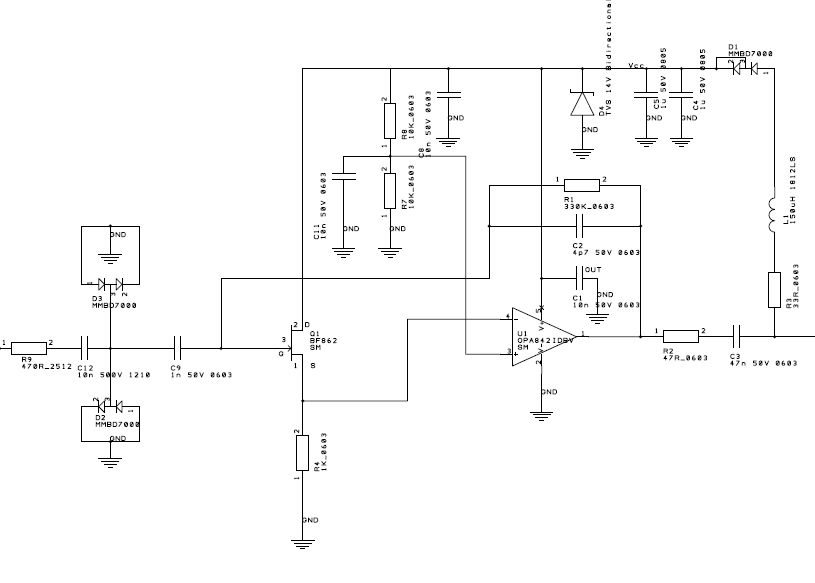I am using the OPA842 in a traditional trans-impedance configuration with a BF862 as input buffer (included in the feedback-loop). Gain is 20dB up to around 10MHz.
I have measured IP3 on this amplifier with f1:1.1MHz and f2:1.11Mhz and found that the slope of the third-order products is far less than 3 times the slope of the fundamentals. In fact the slope was only 1.3 times (in dB), which means that the resulting IP3 is highly depending of the level of the input signal.
Is this a normal behaviour?
If so, it seems to make IP3 a meaningless figure or at least you have to specify the test conditions.
Looking forward to seeing your comments on this. Thanks in advance.
Best regards
Karsten


